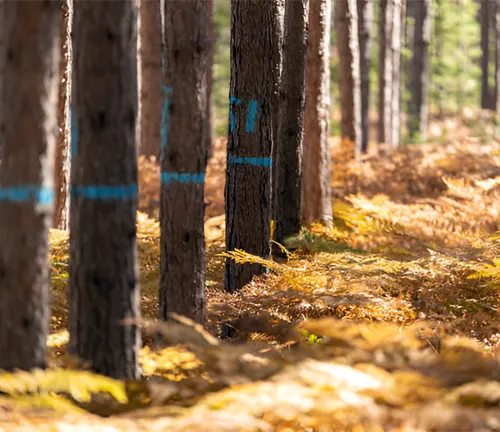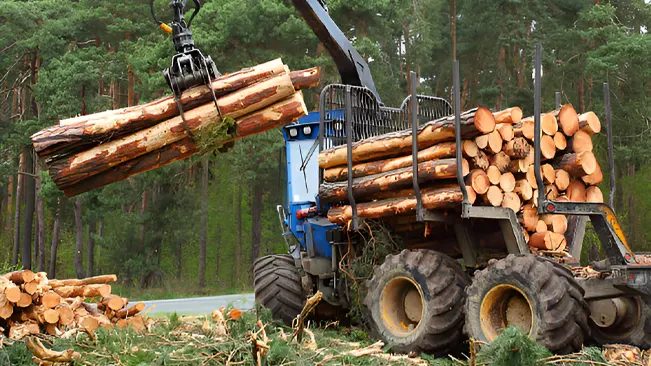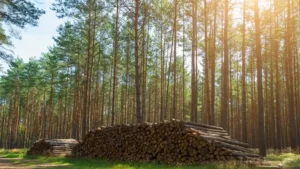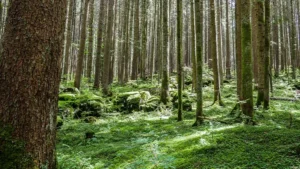Starting Your Forestry Business
- August 8, 2024
- 0 comment
Starting a forestry business can be a rewarding and impactful venture, allowing you to combine your entrepreneurial spirit with a passion for sustainability and environmental stewardship. Whether you’re interested in timber production, forest management, or value-added wood products, this comprehensive guide will walk you through the key steps to launch and grow your forestry business successfully.
Table of Content
- Understanding the Forestry Industry
- Developing Your Business Plan
- Navigating Legal Requirements
- Acquiring Land and Financing
- Implementing Sustainable Practices
- Building Your Operations
- Marketing and Sales Strategies
- Adapting to Change
- Conclusion
- Frequently Asked Questions
Understanding the Forestry Industry

The forestry industry includes many activities, such as growing and harvesting trees for timber and making different wood products. This industry is important because it provides renewable resources, supports rural communities, and helps keep ecosystems healthy. In the United States, the forestry and logging industry generated over $100 billion in revenue in 2020, and the demand for timber products is expected to keep increasing.
This growth creates a great opportunity for new business owners who want to enter the market and make a positive difference. By starting a forestry business, you can contribute to sustainable practices, help local economies, and promote environmental health. As more people become aware of the benefits of using renewable resources, the potential for success in the forestry industry continues to expand, making it an exciting field for entrepreneurs.
Key Areas of Focus
- Timber Production: Involves the cultivation, harvesting, and processing of trees for various uses, including construction, paper products, and furniture.
- Forest Management: Encompasses activities aimed at maintaining and improving the health of forest ecosystems, ensuring biodiversity, and promoting sustainability.
- Value-Added Products: Includes creating products such as furniture, flooring, and specialty wood items, which can increase profitability and market reach.
Developing Your Forestry Business Plan
A well-structured business plan is crucial for any new venture. It serves as a roadmap, guiding your decisions and helping you secure funding. Key components to include are:

- Executive Summary: A brief overview of your business, including your mission, vision, and objectives.
- Market Analysis: Research your target market, identify competitors, and understand current trends in the forestry industry.
- Business Model: Define how your business will operate, including sourcing, harvesting, processing, and selling timber or forest products.
- Financial Projections: Outline your expected revenue, expenses, and profit margins over the first few years of operation.
- Sustainability Strategies: Detail your commitment to sustainable practices, which can enhance your brand and attract eco-conscious customers.
Navigating Legal Requirements
Before launching your forestry business, it is essential to understand and comply with the various legal requirements and regulations. This includes:

- Business Structure: Decide whether to operate as a sole trader, partnership, or corporation. Each structure has different implications for liability and taxation.
- Licenses and Permits: Research the specific licenses and permits required in your region, such as those for logging, land use, and environmental impact assessments. Compliance with laws like the Environment Protection and Biodiversity Conservation Act is crucial.
- Work Health and Safety (WHS): Ensure your business adheres to safety regulations specific to the forestry industry, including standards for equipment, protective gear, and employee training.
Acquiring Land and Financing
Finding the right land and securing financing are critical steps in starting your forestry business. Consider the following:
Land Acquisition
When starting a forestry business, you have a few options for obtaining land. You can buy land outright, rent land through a lease agreement, or partner with landowners who are willing to allow you to use their property for your operations. Whichever route you choose, it’s crucial to carefully evaluate the suitability of the land for forestry activities.
Key factors to consider include the quality of the soil, which can impact the growth and health of the trees. You’ll also want to assess the land’s access to important resources, such as water sources, roads for transporting timber, and any existing infrastructure that could be useful for your business. If the land is remote or difficult to access, it may not be the best choice, as it could add extra challenges and costs to your operations.
By taking the time to carefully assess potential land options and choose a site that is well-suited for forestry, you can set your business up for success from the start. Whether you decide to purchase, lease, or partner with landowners, make sure the land aligns with your business goals and can support sustainable, efficient forestry practices.
Funding Sources
Starting a forestry business requires significant upfront investment, from purchasing or leasing land to acquiring the necessary equipment and machinery. To fund these costs, you’ll need to explore various financing options, such as loans, grants, and partnerships with investors. Loans from banks or other financial institutions can provide the capital you need to get your business off the ground.
However, securing a loan often requires a strong business plan and financial projections to demonstrate the viability of your venture. Grants from government agencies or non-profit organizations focused on environmental conservation or economic development can also be valuable sources of funding, although competition for these grants can be fierce.
Another option is to seek out partnerships with investors who believe in your vision and are willing to provide financial backing in exchange for a share of the business. When pursuing this route, it’s crucial to have a compelling business plan that clearly outlines your goals, strategies, and projected returns on investment. By exploring a range of funding sources and presenting a well-crafted plan, you can increase your chances of securing the necessary capital to launch and grow your forestry business.
Implementing Sustainable Practices
Sustainability is essential in today’s forestry industry. It means using resources in a way that meets our needs without harming the environment or depleting resources for future generations. By implementing sustainable practices, forestry businesses can not only help the planet but also improve their reputation and profitability. Here are some key practices that can make a significant difference:
Selective Logging
One of the most important sustainable practices is selective logging. Unlike clear-cutting, which removes all trees in an area and can cause severe damage to the ecosystem, selective logging involves carefully choosing which trees to cut down.
This method minimizes the impact on the environment and allows the forest to regenerate naturally. By leaving some trees standing, you help maintain the habitat for wildlife and support the growth of younger trees. This approach not only protects the forest’s health but also ensures that timber resources are available for future use.

Reforestation
Reforestation is another crucial practice in sustainable forestry. After harvesting trees, it is essential to replant new ones to maintain forest cover. This helps restore the ecosystem and supports biodiversity, as different species of trees provide habitats for various wildlife.
Replanting also plays a vital role in combating climate change by absorbing carbon dioxide from the atmosphere. By committing to reforestation, forestry businesses can contribute to a healthier planet while ensuring that their operations remain sustainable over the long term.

Ecosystem Management
Working with ecologists to develop effective forest management plans is a key aspect of sustainable practices. Ecosystem management focuses on protecting wildlife habitats and promoting the overall health of the forest.
This involves understanding the relationships between different species and their environments and taking steps to preserve these connections. By prioritizing ecosystem management, forestry businesses can help ensure that forests remain vibrant and resilient, supporting not only the timber industry but also the diverse life forms that depend on these ecosystems.

Incorporating these sustainable practices into your forestry business not only benefits the environment but also enhances your credibility and appeal to consumers who are increasingly concerned about sustainability. By taking responsible actions today, you can help secure the future of our forests for generations to come.
Building Your Operations
Once you have secured the necessary permits and acquired land for your forestry business, the next step is to establish your operations. This involves investing in the right equipment and infrastructure to support your logging and timber processing activities. Choosing the appropriate machinery is crucial, as it can significantly affect both efficiency and environmental impact. Look for energy-efficient options that minimize emissions and reduce fuel consumption, helping to align your operations with sustainable practices.

Additionally, consider building or upgrading facilities for processing timber, storing equipment, and managing logistics to ensure smooth operations. Hiring the right staff is equally important for the success of your forestry business. Recruit skilled personnel who have experience and knowledge of forestry practices, as they will be essential in carrying out operations safely and effectively.
Providing thorough training is vital to ensure that all employees understand safety standards and operational procedures, which can help prevent accidents and injuries on the job. Developing comprehensive safety protocols is necessary to protect your workforce and minimize risks associated with forestry operations. By focusing on both the right equipment and a well-trained team, you can create a solid foundation for your business that promotes safety, efficiency, and sustainability.
Marketing and Sales Strategies
To succeed in the competitive forestry market, effective marketing is essential. Consider the following strategies:

- Brand Identity: Create a strong brand that reflects your commitment to sustainability and quality. Your brand should resonate with eco-conscious consumers.
- Digital Marketing: Utilize social media platforms to showcase your products and practices. High-quality imagery and engaging content can help attract customers.
- Networking: Build relationships with other businesses, suppliers, and industry professionals. Attend trade shows and join forestry associations to expand your network.
- Content Marketing: Share informative content about sustainable forestry practices, benefits of your products, and industry trends to position yourself as an authority in the field.
Adapting to Change
The forestry industry is dynamic, influenced by market trends, technological advancements, and environmental policies. Successful forestry businesses must be adaptable and responsive to these changes. Staying informed about industry developments is crucial, as it allows you to anticipate and prepare for shifts in the market.
For instance, the growing demand for sustainable products and practices has led to an increase in certifications such as the Forest Stewardship Council (FSC) and Sustainable Forestry Initiative (SFI). By aligning your business with these standards, you can enhance your marketability and appeal to eco-conscious consumers.
Participating in professional networks, such as industry associations and trade groups, can provide valuable insights and support, allowing you to share knowledge and best practices with peers and experts in the field. Moreover, continuously seeking opportunities for improvement and innovation is key to maintaining a competitive edge in the forestry industry.
Embrace advancements in technology, such as precision forestry tools, drones for aerial surveying, and data analytics for better resource management. These technologies not only enhance operational efficiency but also contribute to more sustainable practices by enabling better decision-making based on real-time data.
Additionally, fostering a culture of continuous learning within your organization encourages your team to explore new methodologies and adapt to changing circumstances. Regularly reviewing your business strategies and adapting them as needed will help ensure that your operations remain aligned with evolving market conditions and customer preferences. By being proactive and flexible, your forestry business can thrive in an ever-changing landscape, turning challenges into opportunities for growth and success.
Conclusion
Starting a forestry business is a journey paved with challenges but rich in rewards. By developing a solid business plan, navigating legal requirements, implementing sustainable practices, and building efficient operations, you can establish a thriving and environmentally responsible forestry venture. Remember, every decision you make should contribute to building a legacy of environmental stewardship and economic sustainability. Embrace this journey with passion, dedication, and a commitment to making a positive impact on the world around you.
Frequently Asked Questions
1. What is a forestry business?
A forestry business involves the management, cultivation, and harvesting of trees for timber and other wood products. It can include activities such as logging, reforestation, forest management, and the production of value-added wood products.
2. What are the key benefits of starting a forestry business?
Starting a forestry business can provide several benefits, including the opportunity to contribute to environmental sustainability, generate income from renewable resources, support local economies, and create jobs. Additionally, sustainable forestry practices can enhance your business’s reputation and appeal to eco-conscious consumers.
3. What permits do I need to start a forestry business?
The permits required to start a forestry business can vary by location and the specific activities you plan to undertake. Common permits may include land use permits, logging permits, and environmental impact assessments. It’s essential to check with local and state authorities to ensure compliance with all regulations.
4. How do I acquire land for my forestry business?
You can acquire land through several methods: purchasing land outright, leasing land, or partnering with landowners who allow you to use their property for forestry operations. Evaluate the land’s suitability for forestry, including soil quality and access to resources, before making a decision.
5. What funding options are available for starting a forestry business?
Funding options for starting a forestry business include traditional bank loans, grants from government or non-profit organizations, and partnerships with investors. Crowdfunding is also an option to consider, allowing you to raise small amounts of money from many people.
6. What sustainable practices should I implement in my forestry business?
Key sustainable practices include selective logging, reforestation, and ecosystem management. Selective logging minimizes environmental impact by only harvesting certain trees, while reforestation involves planting new trees after harvesting. Ecosystem management focuses on protecting wildlife habitats and maintaining healthy ecosystems.
7. How can I ensure the safety of my employees in the forestry business?
To ensure employee safety, develop comprehensive safety protocols that address potential risks associated with forestry operations. Provide thorough training for all staff on safety standards and operational procedures, and regularly review and update safety practices as needed.
8. What types of equipment do I need for a forestry business?
Essential equipment for a forestry business may include logging machinery, such as chainsaws, skidders, and harvesters, as well as processing equipment for milling timber. Additionally, consider investing in safety gear, vehicles for transportation, and tools for maintenance and management.
9. How can I market my forestry products?
Marketing your forestry products can involve creating a strong brand that emphasizes sustainability and quality. Utilize digital marketing strategies, such as social media and a professional website, to reach potential customers. Networking with local businesses and participating in trade shows can also help promote your products.
10. What challenges might I face when starting a forestry business?
Common challenges in starting a forestry business include navigating complex regulations, securing funding, managing environmental impacts, and dealing with market fluctuations. Additionally, competition from other forestry operations can be a challenge, so it’s important to conduct thorough market research and develop a solid business plan to address these issues.
We hope this guide on starting your forestry business has given you useful steps and ideas for your path to green success. Whether you’re interested in timber production, forest management, or making special wood products, the chances in this field are many and rewarding. If you have any experiences or extra tips about starting a forestry business, please share them in the comments below. Your thoughts can help others on their own journeys and build a helpful community focused on sustainable forestry practices. Also, don’t forget to share this article with friends and others interested in forestry to expand the conversation and highlight the importance of good business strategies in this field.













Leave your comment